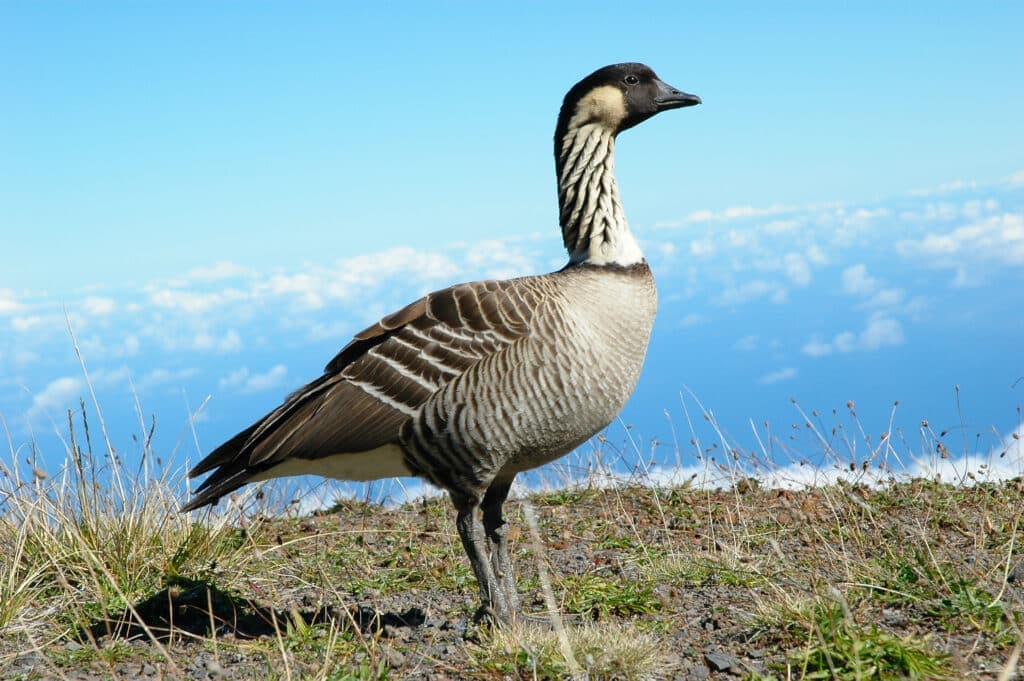By EJ Leonard
Big Island Nature & Parks
Hawaii Wildlife
Hawaiian Culture
Kauai Nature & Parks
Maui Nature & Parks
Oahu Nature & Parks
Visiting Hawaii

On a quiet morning in the mountains, before the trail fills with footsteps and voices, the forest hums with life. Leaves rustle. Wind stirs through the canopy. And somewhere above, a high, whistling call cuts through the stillness. This is Hawaiʻi as few visitors experience it — alive with native Hawaiian birds whose songs have echoed across these islands for generations.
The intricate bird song of these native species is not just a call but a complex melody that plays a crucial role in their territorial behavior and mate attraction. You don’t need to be a birder to appreciate their beauty. You just need to slow down, listen, and look up. Whether you’re planning a hike through the upland rainforest or visiting a coastal wildlife refuge, this guide will help you discover the birds that call Hawaiʻi home — and understand why their presence is so meaningful.
red-footed booby (Shutterstock)

Hawaiʻi once had over 130 native bird species, each uniquely adapted to island life. Separated by thousands of miles from any continent, these birds evolved into colorful nectar-feeders, ground dwellers, and canopy singers, who played vital roles in the forest’s health.
But these birds are more than beautiful or biologically unique — they are deeply woven into the cultural fabric of Hawaiʻi. Many are honored as aumākua, ancestral guardians that watch over families and guide them in times of need. Their feathers once adorned the cloaks and helmets of aliʻi, crafted with care and ceremony, each plume representing a connection to the divine.
Their vocalizations echo through oli (chants) and appear in hula that celebrate the land, its winds, and its forests. The wood thrush, known for its unique ability to produce two simultaneous tracks from separate voice boxes, parallels the cultural significance of bird songs in Hawai’i, showcasing the intricate beauty and complexity of avian communication. They are present not just in the trees, but in the stories that shape identity and place.
While some have vanished, many remain — darting through native forests, gliding above the wetlands, or soaring silently over open plains. To see one is more than a lucky sighting. It’s a moment of connection. A glimpse into the living spirit of Hawaiʻi.
Endangered Hawaiian Goose (Shutterstock)

Often mistaken for mallards, koloa maoli are shy, brown native ducks that prefer quiet wetlands and forest streams. Pure koloa is increasingly rare due to hybridization, but they’re still out there, paddling among reeds and dabbling in shallow water. Listening for the soft quacks of the Koloa Maoli can help birdwatchers locate these elusive ducks in their natural habitat.
Where to look: Hanalei and Keālia refuges, and parts of Hawaiʻi Island
The endangered ‘Amakihi, a honey creeper (Shutterstock)
Join our newsletter for travel inspiration, insider tips and the latest island stories.
By subscribing, you agree to receive emails from Hawaii.com. You can unsubscribe anytime. See our Privacy Policy.